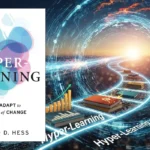In today’s world, success is less about perfecting your skills or crafting the most flawless plan, and more about finding, connecting with, and working alongside the right people.
This is the simple yet transformative insight at the heart of Claudio Fernández-Aráoz’s book, “It’s Not the How or the What but the Who: Succeed by Surrounding Yourself with the Best.” Fernández-Aráoz, a senior adviser at the executive search firm Egon Zehnder, dives deep into the importance of finding the right people for your career, your projects, and even your life, blending research-backed insights with real-life examples from business, sports, and more.
Here’s why it’s a must-read for anyone looking to grow in their professional and personal life.
The Value You’ll Get Inside
Fernández-Aráoz’s “It’s Not the How or the What but the Who” isn’t just a management book; it’s a guide to building stronger connections and a blueprint for creating teams that actually work. If you’re on the fence about diving in, here are some in-depth reasons why this book could make a meaningful difference in both your professional and personal life.
It Shifts Your Focus from Self-Improvement to Relationship-Building
Most of us, whether personally or professionally, are always seeking ways to grow, improve, and expand our skills. While that’s incredibly valuable, Fernández-Aráoz suggests that the best way to elevate our success isn’t through more and more self-improvement—it’s by investing in the relationships around us. After all, even the most capable leaders don’t thrive in isolation; they rise because they are backed by the right people.
In this book, Fernández-Aráoz explains how the most impactful leaders, from Steve Jobs to Sheryl Sandberg, spent considerable energy identifying and nurturing key relationships. Whether it’s assembling a high-performing team at work, finding a mentor who helps you grow, or surrounding yourself with inspiring friends, the quality of the people in your circle is often the real difference-maker. He challenges the reader to think beyond personal growth and instead to develop an “eye for potential” in others. The message is clear: building relationships isn’t just good for team spirit; it’s a cornerstone of lasting success.
It’s Packed with Actionable Tips for Talent Spotting
Finding the right people is an art as much as it is a science, and Fernández-Aráoz doesn’t leave readers guessing on how to do it. He gives concrete, actionable tips that can immediately improve your ability to recognize talent and potential in others. One of his most powerful suggestions is to focus on “potential” over “performance”—especially in today’s world, where change is constant, and job requirements can shift rapidly. Someone who has strong potential to adapt, learn, and grow can often be far more valuable than someone with just a track record of past achievements.
Fernández-Aráoz breaks down five indicators of potential: motivation, curiosity, insight, engagement, and determination. He explains how you can look for these traits during interviews, on your team, or even in casual interactions. The book also emphasizes that potential is rarely obvious at first glance; it often shows up in subtle ways. For example, someone who asks thoughtful questions and demonstrates a hunger to learn may be a better long-term hire than someone who has been performing the same role flawlessly but doesn’t seem eager to push boundaries.
Fernández-Aráoz also provides a checklist for spotting these qualities. By following his guide, you can identify not only people who have technical skills but also those who have the grit, passion, and drive that your team needs for future success.
It’s Practical for Leaders at All Levels
Whether you’re a CEO of a Fortune 500 company or a newly promoted manager learning the ropes, Fernández-Aráoz’s principles are applicable across all levels of leadership. For those just starting out, it’s a roadmap for understanding what makes a team function effectively and how to set people up for success. For senior leaders, it’s a reminder that even the most experienced manager needs to be intentional about people selection and talent development.
One of the most valuable takeaways for new managers is the concept of the “talent magnet.” Fernández-Aráoz suggests that every leader has the power to become a talent magnet, attracting exceptional people through a combination of clear vision, authentic passion, and demonstrated support. A good leader doesn’t just hire talented people; they create an environment where these individuals feel empowered to contribute, learn, and grow.
For more seasoned leaders, Fernández-Aráoz encourages a shift away from micromanaging and toward being a “talent developer.” He provides advice on coaching techniques, the importance of active listening, and how to build a team culture that values learning over perfection. In short, he offers a toolkit that can help any leader transform their team into a high-performing unit by focusing on each person’s unique strengths.
It’s Research-Based Yet Relatable
Claudio Fernández-Aráoz doesn’t just rely on intuition or anecdotal experience; he brings in solid research from psychology, human behavior, and organizational science to support his arguments. This data-driven approach adds depth to his ideas, giving readers the assurance that these principles have been tested in real-world scenarios. For example, he references studies that show why “emotional intelligence” often trumps traditional IQ when it comes to long-term career success, especially in leadership positions.
But even though he dives into data and theory, Fernández-Aráoz has a knack for keeping things down-to-earth and engaging. His writing is approachable, relatable, and filled with humor, making even the most complex ideas easy to digest. He also pulls stories from his own career in executive search, as well as well-known historical examples, to demonstrate the universal importance of finding the right “who.” His conversational tone, coupled with real-life examples, ensures that readers can see themselves applying these principles immediately in their own lives.
Final Thoughts
Fernández-Aráoz’s message is simple yet profound: success isn’t just about what you do or how you do it. The people you surround yourself with—your “who”—are the true game-changers. His book offers a roadmap for finding, nurturing, and leading the right people, with practical steps you can put into action today.
Real-Life Examples That Stick with You
Throughout the book, Fernández-Aráoz shares stories of both failure and triumph in the realm of talent selection. Take, for instance, his recounting of how Apple’s turnaround in the late 1990s was due in no small part to Steve Jobs’ return and his ability to surround himself with the best people. Jobs wasn’t only an innovator; he had an uncanny ability to recognize the kind of people who could drive Apple’s vision forward. Fernández-Aráoz shows that it wasn’t just about Steve’s ideas or Apple’s plans; it was about having the right team on board to execute.
Or consider Fernández-Aráoz’s example from the world of sports, where he discusses how the success of a championship team hinges not solely on the talent of the players but on the chemistry, trust, and complementarity they bring to each other. A great coach is not only a great strategist but an exceptional talent scout, focused on finding players who work well together rather than just picking the most skilled individuals.
These examples emphasize that whether in tech, sports, or any field, the “who” factor often trumps the “what” or “how” when it comes to achieving extraordinary results.
Join the Conversation!
What do you think? Have you ever experienced the impact of working with the right—or wrong—team? How have strong relationships contributed to your success? Or maybe you’re a leader yourself—how do you find and attract the best people to your team? Drop your thoughts below and let’s chat about the power of relationships in reaching our goals. And if you’ve read “It’s Not the How or the What but the Who,” we’d love to hear what resonated with you most!
5 powerful quotes from “It’s Not the How or the What but the Who” by Claudio Fernández-Aráoz
📖 “Great leaders understand that their success depends more on the people they choose than on the strategies they design.”
👉 Meaning: No matter how brilliant your plan, if you don’t have the right people to carry it out, it won’t succeed.
👉 Simple terms: People matter more than plans.
📖 “Potential is more important than past performance, because tomorrow’s challenges will be different from today’s.”
👉 Meaning: Don’t just hire based on what someone has already done—look for curiosity, adaptability, and the ability to grow.
👉 Simple terms: Hire for growth, not just history.
📖 “The most effective leaders are talent magnets—they attract, develop, and retain extraordinary people.”
👉 Meaning: True leadership isn’t about doing everything yourself—it’s about creating an environment where great people want to join and stay.
👉 Simple terms: Great leaders bring great people with them.
📖 “Selecting the right people is the ultimate leadership skill.”
👉 Meaning: Out of all the leadership abilities you could master, none is more critical than choosing the right “who.”
👉 Simple terms: The best skill a leader can have is picking the right team.
📖 “In a world of rapid change, the winners will be those who can consistently identify and nurture potential.”
👉 Meaning: Since industries and roles are constantly evolving, success belongs to leaders who know how to spot raw talent and help it grow.
👉 Simple terms: The future belongs to those who grow people.


